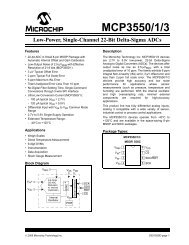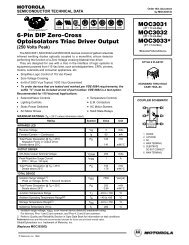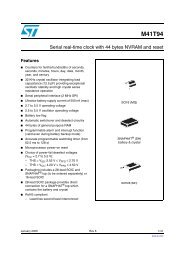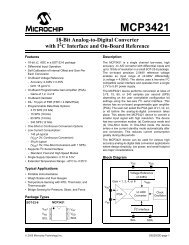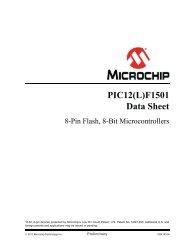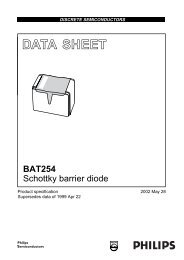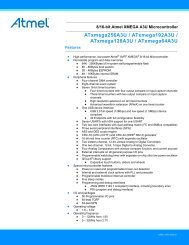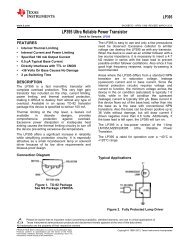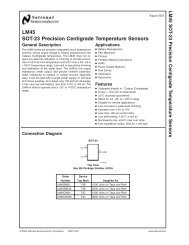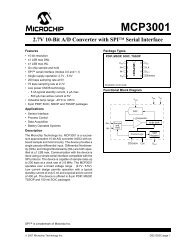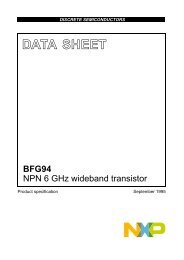DP83848C PHYTER Comm Temp Single Port ... - Texas Instruments
DP83848C PHYTER Comm Temp Single Port ... - Texas Instruments
DP83848C PHYTER Comm Temp Single Port ... - Texas Instruments
You also want an ePaper? Increase the reach of your titles
YUMPU automatically turns print PDFs into web optimized ePapers that Google loves.
<strong>DP83848C</strong>4.2.2.1 Digital Adaptive Equalization and Gain ControlWhen transmitting data at high speeds over copper twistedpair cable, frequency dependent attenuation becomes aconcern. In high-speed twisted pair signalling, the frequencycontent of the transmitted signal can vary greatlyduring normal operation based primarily on the randomnessof the scrambled data stream. This variation in signalattenuation caused by frequency variations must be compensatedto ensure the integrity of the transmission.In order to ensure quality transmission when employingMLT-3 encoding, the compensation must be able to adaptto various cable lengths and cable types depending on theinstalled environment. The selection of long cable lengthsfor a given implementation, requires significant compensationwhich will over-compensate for shorter, less attenuatinglengths. Conversely, the selection of short orintermediate cable lengths requiring less compensation willcause serious under-compensation for longer lengthcables. The compensation or equalization must be adaptiveto ensure proper conditioning of the received signalindependent of the cable length.The <strong>DP83848C</strong> utilizes an extremely robust equalizationscheme referred as ‘Digital Adaptive Equalization.’The Digital Equalizer removes ISI (inter symbol interference)from the receive data stream by continuously adaptingto provide a filter with the inverse frequency responseof the channel. Equalization is combined with an adaptivegain control stage. This enables the receive 'eye pattern' tobe opened sufficiently to allow very reliable data recovery.The curves given in Figure 8 illustrate attenuation at certainfrequencies for given cable lengths. This is derived fromthe worst case frequency vs. attenuation figures as specifiedin the EIA/TIA Bulletin TSB-36. These curves indicatethe significant variations in signal attenuation that must becompensated for by the receive adaptive equalization circuit.Figure 8. EIA/TIA Attenuation vs. Frequency for 0, 50,100, 130 & 150 meters of CAT 5 cablewww.national.com 28



